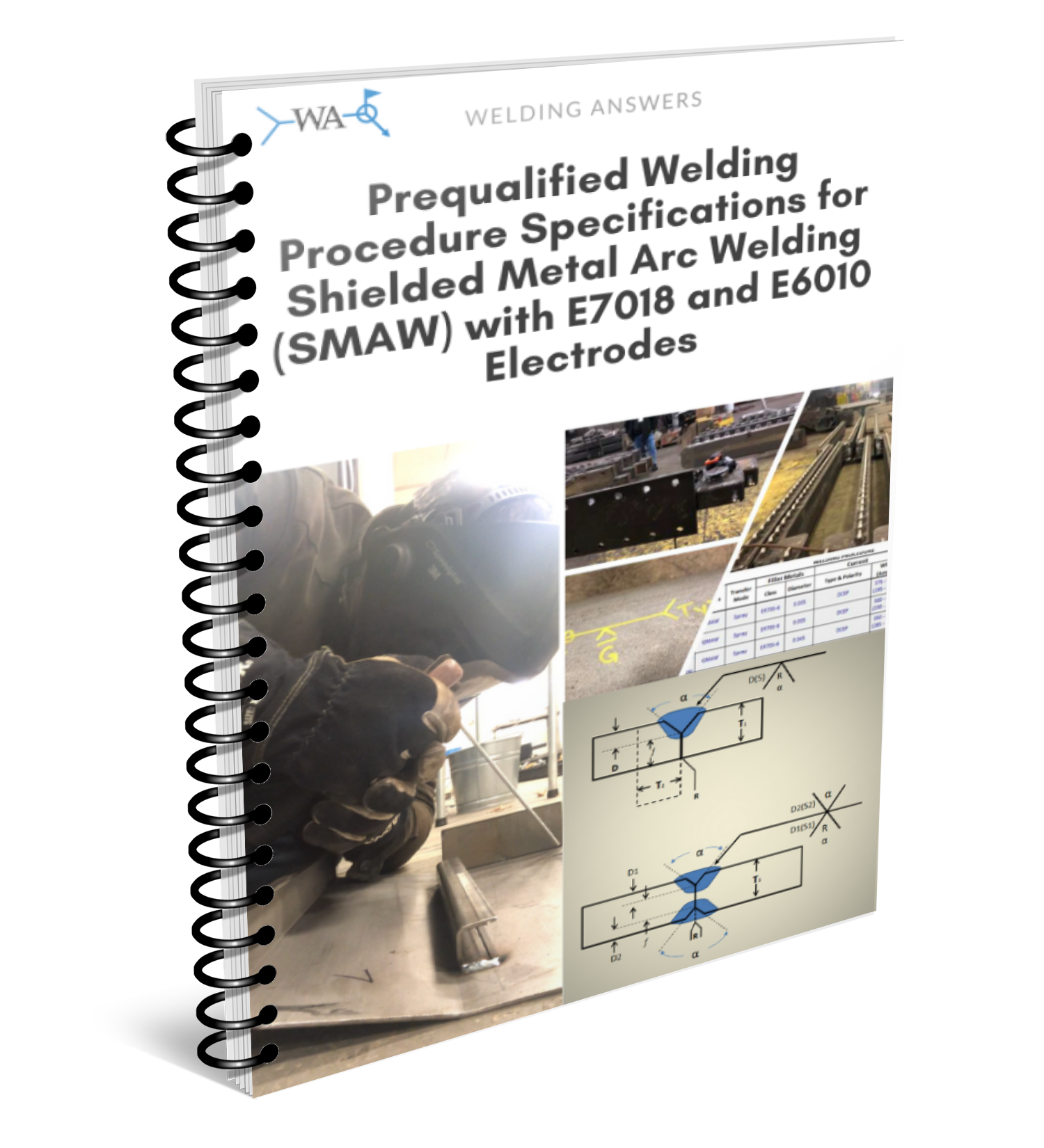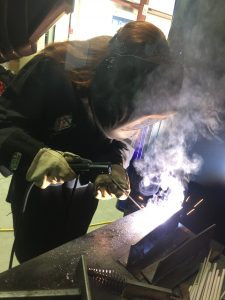
Shielded metal arc welding (SMAW), or what is commonly referred to as “stick welding,” is one of the oldest welding processes. Despite being one of the first welding processes developed, it remains one of the most used welding process worldwide. If you have been working in a fabrication shop for years using advanced GMAW (mig) welding equipment you may think stick welding is declining. However, nothing could be further from the truth. Big companies such as Lincoln Electric, Hobart, ESAB, Bohler and many others continue to invest millions of dollars in improving and developing new formulas for SMAW electrodes.
Stick welding has many significant advantages over mig welding (GMAW), flux-cored welding (FCAW), tig welding (GTAW) and subarc (SAW). Below are a few of these advantages.
- Low equipment cost – SMAW requires very simple equipment that is relatively inexpensive compared to even the most basic mig welders.
- No shielding gas required – SMAW electrodes generate their own shielding gas (mainly carbon dioxide) as the arc burns off the coating. No need to haul around or mess with cylinders of shielding gas.
- Outdoor use – have you ever tried mig welding outdoors? Even a 3mph (5kph) wind is enough to blow your shielding gas away and create porosity. Stick welding can be done outdoors with winds up to 35mph (58kph) without any issues.
- Versatility and flexibility – if you need to weld different materials, as in the case of maintenance welding, you can switch from one type of alloy to another and only need to change the type of electrode you are using, everything else remains the same. Unlike mig welding where you would need to change gas if you switch from carbon steel to stainless or to aluminum, stick welding requires nothing more than reaching for the right electrode and you are on your way.

Are you looking for welding procedures for E6010 and/or E7018 stick processes? Click the image above to get 48 Prequalified WPSs for SMAW in conformance with AWS D1.1 Structural Welding Code.
- Reach – hard to access joints can be more easily welded with stick electrodes due to their length (12-16 inches).
- High strength options – stick electrodes get all of the alloying for strength and arc properties from the flux coating. Adding alloys to the flux is relatively simple so stick electrodes that can make deposits with strengths of 120Ksi and higher are readily available. To do this with a mig wire becomes extremely difficult as no alloys can be added and manufacturers depend on the green rod (raw material for making mig wire) to have those mechanical properties.
- Out-of-position welding – stick welding generates slag as the puddle solidifies. This slag helps protect the molten puddle from the atmosphere. When we are welding out-of-position this slag acts as a shelf which supports the puddle and prevents it from spilling over while it solidifies. This makes stick welding a great choice for welding vertical up or overhead.
These are significant advantages for the shielded metal arc welding process, but before you go buy a stick welder keep in mind that just like other welding processes it has its drawbacks and limitations. Some of these drawbacks are: relative high fume generation, low deposition rates, high level of skill required by the welder, low electrode efficiency, additional operation to clean the slag, high potential for inclusions and susceptibility to pick up moisture (a concern when using low hydrogen electrodes such as 7018).
References:
Qualification of Welding Procedures, Welders and Welding Operators


In the realm of welding techniques, stick welding truly carves out its niche. Its enduring popularity rests on its raw simplicity and adaptability. As a welder, I’ve found its effectiveness unmatched in rugged environments where other methods falter. The compact setup and portability make it a go-to for on-site repairs, ensuring minimal downtime. While it might not deliver the seamless aesthetics of more intricate processes, its robust welds withstand the test of time. In a world of technological advancements, stick welding holds its ground as a reliable, old-school method that commands respect in its unique niche.
Very true!